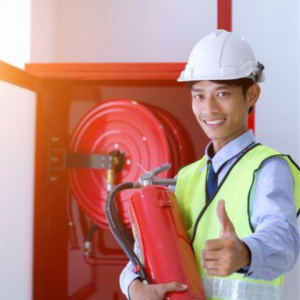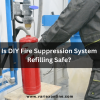![]()
Fire Immuniser
+91-7829629111
Email: info@variex.in
Varistor Technologies Pvt. Ltd.
Block-1, First Floor, Ardente Office One, Hoodi Circle, ITPL Main Road, Bengaluru, Karnataka 560048, IN
How Often Should Fire Extinguishers Be Refilled
Introduction
Fire extinguishers are crucial safety devices that play a vital role in protecting lives and property during emergencies. To ensure their effectiveness, regular maintenance and refilling are necessary. However, many individuals are often uncertain about how often fire extinguishers should be refilled. In this article, we will explore the factors that influence fire extinguisher refill frequency, the importance of inspections, and provide guidance on when and how to refill these essential firefighting tools.
Factors influencing fire extinguisher refill frequency
Several factors determine how frequently fire extinguishers should be refilled. These factors include the type of extinguisher, its expiration date, usage history, and environmental conditions.
Type of extinguisher
Different types of fire extinguishers require varying refill frequencies due to the differences in their extinguishing agents and pressure systems. Portable fire extinguishers, categorized as dry chemical, carbon dioxide (CO2), or water-based, all have specific refill intervals. For example, CO2 extinguishers typically require refilling every five to ten years, while dry chemical extinguishers may need refilling as often as every six years.
Expiration date
Fire extinguishers have a limited shelf life, with most manufacturers recommending replacement every 10 to 12 years. Although this timeframe may vary slightly between different brands, exceeding the expiration date significantly increases the risk of malfunction or failure. Regular refilling during inspections also allows for a thorough examination of the extinguisher for signs of wear or damage that may render it ineffective.
Usage history
The usage history of a fire extinguisher also influences the refill frequency. Fire extinguishers that have been discharged, even partially, must be refilled immediately to ensure they remain fully functional during subsequent emergencies. Even without usage, these devices can gradually lose pressure over time, necessitating refilling as part of routine maintenance.
Environmental conditions
The environmental conditions to which fire extinguishers are exposed can impact their refill frequency. Locations with corrosive agents, extreme temperatures, or high humidity levels may accelerate wear and tear, requiring more frequent refilling. In areas where fire extinguishers are subject to potential physical damage or vandalism, refilling should occur at shorter intervals to maintain their efficacy.
The importance of inspections
Regular inspections are crucial for determining when fire extinguishers need to be refilled. Inspections should follow a scheduled routine and involve checking the pressure gauge, ensuring the seal is intact, inspecting for physical damage or signs of leakage, and verifying the extinguishing agent remains uncompromised. Compliance with local fire safety regulations, including having inspections conducted by licensed professionals, is essential for ensuring the safety of occupants and the premises.
When and how to refill fire extinguishers
Fire extinguishers should be refilled whenever they show signs of depletion, damage, or after being discharged. It is crucial never to neglect refilling, as an empty or malfunctioning extinguisher can have disastrous consequences during a fire emergency.
Refilling fire extinguishers should be carried out by trained professionals who have the necessary knowledge, skills, and equipment. DIY refilling attempts can lead to improper fluid levels, incorrect pressure, or damage to the extinguisher itself. Professional refill services ensure that the extinguisher is filled with the appropriate agent, pressurized correctly, and undergoes necessary tests to guarantee its effectiveness.
In addition to refilling, it is crucial to maintain proper records of the refilling dates, inspections, and any repairs undertaken. This documentation helps establish an accurate maintenance schedule and provides a history of the extinguisher's serviceability.
Conclusion
Fire extinguishers are indispensable devices for safeguarding lives and property in the event of a fire. To maintain their effectiveness, regular refilling is necessary, influenced by factors such as the type of extinguisher, its expiration date, usage history, and environmental conditions. Remember, inspections play a pivotal role in identifying refilling needs, ensuring compliance with safety regulations, and guaranteeing the readiness of fire extinguishers. By adhering to the recommended refilling intervals and conducting inspections, you can ensure that your fire extinguishers are always prepared to tackle emergencies effectively. Never overlook the importance of professional refill services to maintain the reliability and safety of these essential firefighting tools.
Final Say
We at VariEx.in or Variexonline.com have mastered the art of designing, installing, inspecting, and fixing automatic sprinkler systems with the help of our in-house team, which is capable of delivering the fire sprinkler services you need, whether large or small and at affordable cost.
To schedule a fire sprinkler installation, or you think our services could benefit your commercial property, contact us online or give us a call at, 7829629111










